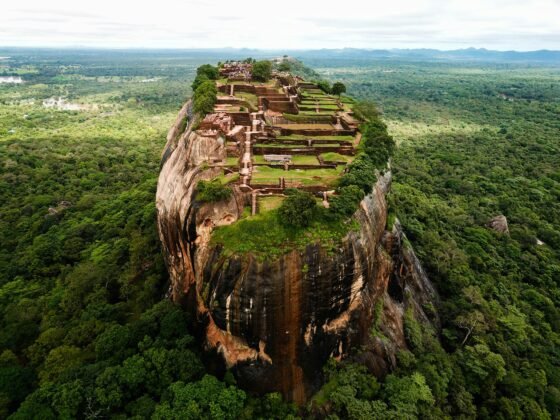Greece remains a firm travel favourite and with a plethora of ancient ruins, rugged coastlines, pristine beaches and fabulous food, it’s easy to see why! Home to the city of Athens; the birthplace of Classical Greece and Western civilization as we know it and some world class historical sites including The Acropolis, Mount Olympus and The Parthenon to name just a few.
The Acropolis of Athens
The spectacular Acropolis is the beating heart of Athens, the capital of Greece. Both its emotional and geographic center, the ancient citadel rises above the city from its midst. This is a must-see for anyone visiting mainland Greece as it is often considered the cradle of western civilization and the beginning of its culture and history. The Acropolis is also listed as a UNESCO World Heritage Site. The Acropolis consists of a citadel atop a rocky hill, in which many significant historical buildings’ remains are located. Overall, a trip to Greece simply MUST include a visit to the Acropolis; the most famous monument from the ancient world.
Panathenaic Stadium
In 1896, the first ever modern Olympics were held in Athens at the Panathenaic Stadium or Panathinaiko, on the site of the original Olympics games in the 4th century B.C. The stadium was restored in 1896 and again in 2004 for the Olympic Games hosted in Athens. It has a storied history, having been used for Roman gladiator contests. The Panathenaic Stadium is the only stadium in the world made entirely of white marble, in this case hailing from Mt. Penteli, and the stadium is one of the oldest in the world. It could originally seat about 80,000 spectators, all seated on marble steps in rows. Anyone interested in the history of the Olympics and its roots in Greece would be well advised to visit the Panathenaic Stadium.
Mount Olympus
One of the highest peaks in Europe, Mt. Olympus has great prominence in Greek mythology as the original home of the twelve Olympian gods who ruled the ancient world, and many Greek myths use Mt. Olympus as their setting. 10,000 people hike and climb Mt. Olympus every year; it is a Greek National Park and is frequently cited as having a remarkable variety of species of flora. The highest peak is called Mytikas, at a height of 2,917 meters and Olympus itself actually comprises a total of 52 peaks. Most hiking Mt. Olympus begins in the town of Litochoro, known as “The City of Gods.” For anyone who enjoys challenging hiking and the outdoors, Mt. Olympus is a majestic mountain and a key element of ancient Greek history and mythology.
The White Tower of Thessaloniki
The White Tower is one of the most famous landmarks in the city of Thessaloniki in Northern Greece. It was reconstructed during the Byzantine era, and the Byzantines intended to have the White Tower fortify the harbour of the city. During the Ottomans’ time, it was utilized as a prison and site of mass murder. When the Greeks took control of Thessaloniki once more in 1912, they whitewashed the tower, and it is now a prominent symbol in the city. The White Tower now houses a museum detailing the history of Thessaloniki. This landmark and its accompanying museum are a terrific part of any visit to Thessaloniki.
Temple Of Olympian Zeus
The largest temple in Greece, this Temple of Olympian Zeus is a spectacular historical monument. It took 700 years to build beginning in the 6th century B.C., and the ruler Hadrian finished construction in the year 131 A.D. The temple housed magnificent statues, made of ivory and gold, of both Zeus and Hadrian. 15 of the original Corinthian-style columns survive, having once totalled over 100. A remarkable and massive temple, the Temple of Olympian Zeus is a key site in ancient Greek history.
Theatre Of Dionysos
The original 6th century open-air theatre of Dionysus Eleuthereus housed productions of plays during Athens’ golden era. Plays by such monumental figures in Greek theatre, including Aristophanes, Sophocles, Euripides, and Aeschylus were all performed here. It was originally used for performances that were associated with festivals celebrated the god Dionysos. The theatre had tiered seating for thousands of people in the audience, and about 20 of the original 60-plus tiers survive. An altar for Dionysos in the orchestra area, as well as marble thrones intended for high priests and assorted dignitaries are on view today.
Tower Of The Winds
The Tower of the Winds is a remarkable structure in Athens hailing from the 1st century B.C. It was built by a Syrian astronomer who created this eight-sided monument made of marble. The Tower of the Winds functioned as a sundial, a weather vane, a compass, and a water clock. Each side illustrates one point on a compass, and the markings of the sundial are visible as well. The weather vane, however, is no longer part of the Tower of the Winds. The Tower of the Winds was also used a bell tower in early Christian times in the Byzantine era. Otherwise well-preserved, the Tower of the Winds is a fascinating monument worth visiting.












